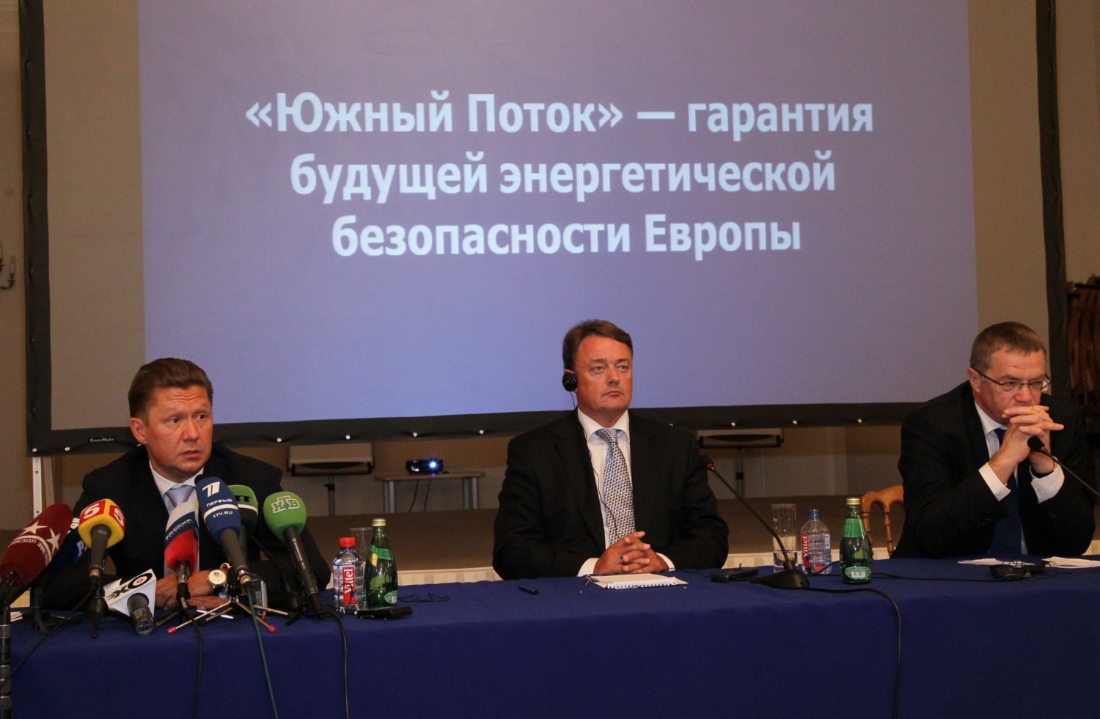South Stream project presentation
South Stream. European Dimension
Russia and Europe are linked together by the decades of mutually beneficial cooperation in the energy sector. It is a fact of common knowledge. However, I’d like to point out one more fact. Historically, the USSR gas industry shaping has been driven to a considerable extent by the challenges related to the European energy balance diversification!
In the 1970s Europe faced the need for a new energy supply infrastructure. And this infrastructure – for Russian gas supply – was created.
The history repeats itself. While 40 years ago Europe needed to get an additional source of energy resources to offset the unstable oil supplies, in our days Europeans have to offset the dramatic drop in their own gas production.
The existing European infrastructure has become incapable of meeting gas demand in the long run. Thus, it is the South Stream project where Russian interests exactly coincide with the ones of the European Union.
From one side – South Stream is the result of cooperation between Russia and Europe in the recent decades, from the other – this is a new level of cooperation. The project implementation is an ambitious goal for both strategic partners.
We may even call South Stream not just a project but a “road map” as they use to say or a plan for our cooperation with the European Union in the energy sector. This is the pivot of the business relationship between Russia and Europe for many years to come.
We may see that today's pragmatic and positive policy pursued by the European Commission and the European Union leadership is aimed at business cooperation.
South stream is our top-priority project and its implementation will testify that Russia will remain a key EU partner in the gas industry for decades ahead.
It is crucial for us HOW to solve an important task of the new energy infrastructure creation for Europe. And the key word here is – diversification. Our strategic task is to ensure maximum diversification of the gas supply routes with South Stream being a cornerstone of this strategy.
There is another concern – it is necessary to create not only gas transmission facilities but, what is essential, underground gas storages in the vicinity of European consumers. This is how we structure the project – in addition to the pipeline itself we usually make agreements with the project participants on underground gas storage facilities construction.
The South Stream gas pipeline construction gives a powerful impetus to the economies of Southern and South-Eastern Europe. The project helps overcome the crisis, increases the participating countries' income and creates new jobs. It is a source of foreign direct investment. The amount of project investment is equal to the amount of new orders in the region. The project helps develop the energy sector across the continent, including underground gas storage systems and the power generation industry.
This means the entire Europe needs South Stream.
As long as half a year ago we said in all certainty that the project was successful! All the necessary agreements with the participating countries had been signed and the critical mass had been reached by that moment. Nothing can stop the process. Even the critics now concede that the project is rapidly progressing. And we can't help agreeing with them!
The project will face no problems with financing regardless of the financial crisis. The answer to the question “Why?” is obvious. Gazprom has the required gas, sales market and reliable partners for South Stream.
French EDF has joined the project today. It is not just a new participant. We are united by a really comprehensive interaction that covers the gas transmission infrastructure development, the cooperation in marketing, power generation, swap deals and underground gas storage. This is a really strategic partnership.
In the conclusion it should be noted that once constructed, South Stream will forever protect Europe against energy crises and cold winters.
We are sure that Russia and the European Union can face any energy challenges together.


